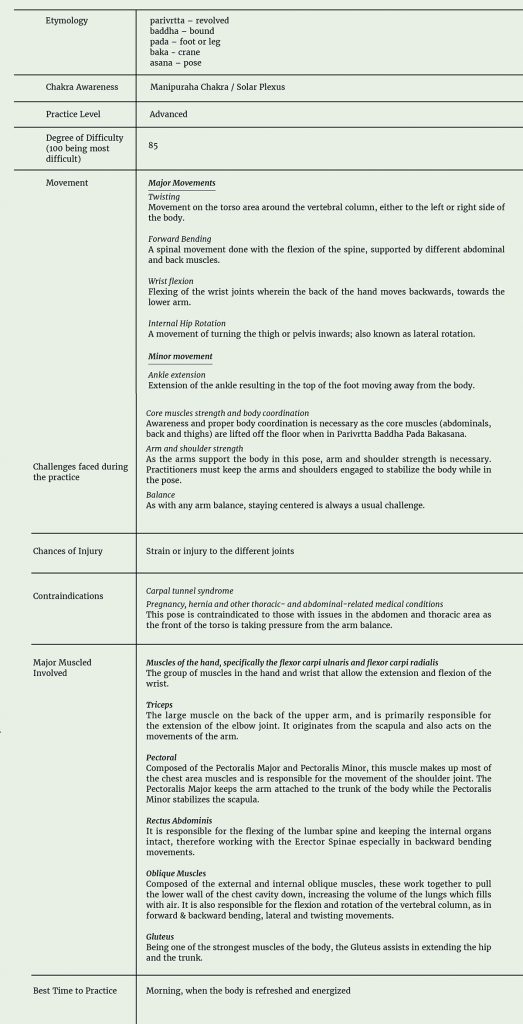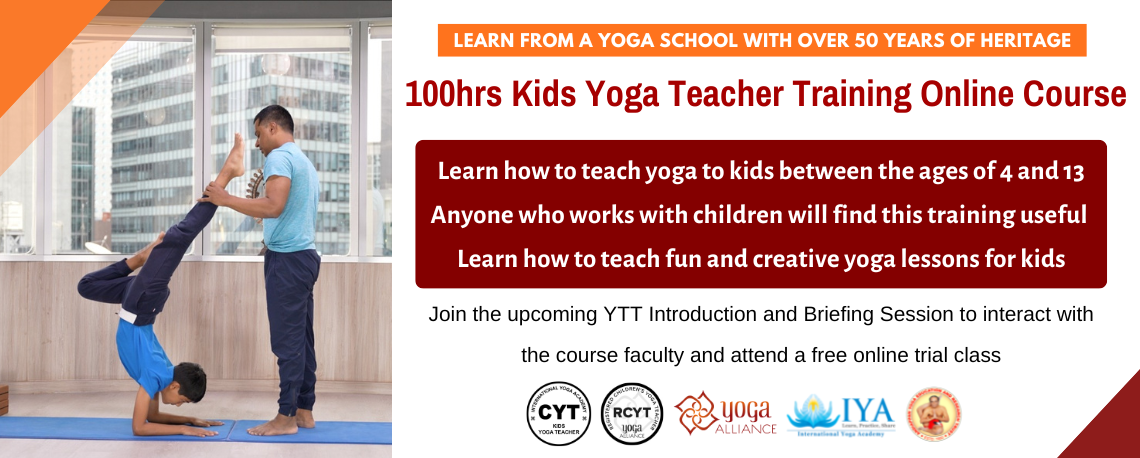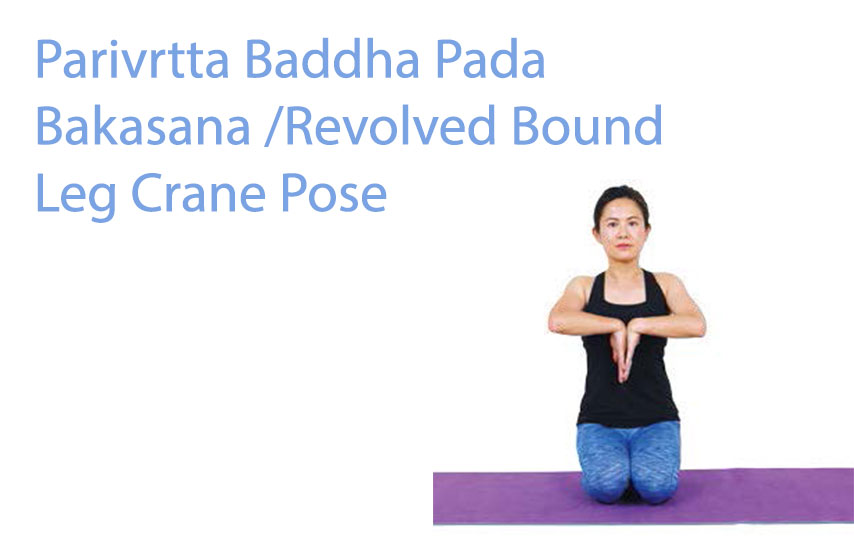To a lot of practitioners, Bakasana or Crane Pose is a challenging and beautiful pose as it displays one’s level of dedication, focus and strength.
Adding in a twist and the legs wrapped around each other brings a different level of challenge to the practice.
To avoid any confusion in the terminology and name of the poses, “Crane” is when the arms are straigh (representing the long legs of a crane), while when the arms are bent, the pose is referred to as “Crow”.


Wrist Stretch
1. Come down to the floor on the hand and knees, similar to tabletop pose.
2. Rotate the wrists outwards so that the fingers are pointing towards the knees. Maintain both arms straight.
3. Inhale and on exhale, bring the hips back and feel the stretch on the wrists. Hold for a few breaths.
4. Repeat several times by moving in and out of the pose together with the breath.
Benefit: Extends the muscles of the wrist to take pressure from the arm balance.

Utthita Dandasana / Upward Plank Pose
1. From tabletop position with the hands and knees on the floor, lift the knees and extend the legs back, coming into a push-up position.
2. Keep the arms straight below the shoulders and the whole body active, lifting the body upwards with the pelvis tilting forward/ scooping in, towards the abdomen.
3. Hold the pose for 3 breaths and return to tabletop position. Repeat for a few more times.
Benefit: Improves core strength, tones up the arms, legs, abdomen and the back muscles.

Chaturanga Dandasana / Four-limbed Staff pose
1. From Dandasana or plank pose, shift the body forward so that the shoulders go a little over the wrists.
2. Inhale and on exhale, bend the elbows back and lower the body to the same height as the elbows. Keep the arms to the side of the body.
3. Pull the heels back to distribute some weight to the balls of the feet.
4. Keep the gaze down and engage the abdomen to let the torso centre the body weight.
Benefit: Prepares the shoulders and arms muscles for shoulder protraction and wrist flexion.

Seated Twisting
1. Sit on the floor with the legs outstretched and back straight.
2. Slowly bend the keen and bring the thighs closer to the abdomen.
3. Inhale raise the right arm up and extend your spine and as you exhale twist to the left side and lock the right arm against the left thigh.
4. Try to hold the left foot with the right hand and gently twist to the left side and press the left hand on the floor.
5. Raise the back up towards the ceiling.
Benefit: Good massage for the abdominal organs and improves the flexibility of the spine.
STEPS

1. Sit on the floor and bend the knees.

2. Twine the legs with the left knee on top of the right, and hook the left foot under the right lower leg or calf.

3. Raise the right arm and twist to the left, the right elbow locking into the left thigh.

4. Place both hands on the floor.

5. Slowly lean forward, bend the elbows and raise the hips off the floor.

6. Engage the shoulders and raise the hip higher while leaning into the elbows.
Final Pose


Slowly raise the feet and look forward.
TIP! Maintain the balance in this pose by pressing the fingers on the floor and keeping the mind focused on lifting the body.
Variation

From the final pose, place the forehead on the floor and focus on engaging the shoulders and upper back.
Modifications

Below are the modifications of Parivrtta Baddha Pada Bakasana available to different practitioners. Depending on the flexibility of the hip, the legs can be either in butterfly position or in Padmasana.

For those with limited ankle rotation Instead of hooking one foot under the calf, just cross the legs across the knee area.
Neutralizing MOVEMENTS
Neutralizing poses are important for long-term injury prevention; it allows the body to return to its neutral position. Be aware of pressure alert points and listen to your body – do neutralizing movements after slowly coming out of the pose.

As the body weight rests on the arms in this pose, the shoulder takes a lot of pressure in keeping the pose stable. While in twist, the oblique muscles are being squeezed. Practice the below to release tightness created in the shoulders and to create space in the obliques.
Internal Shoulder Rotation
Sit on the heels in Vajrasana/diamond pose and sit with the spine neutral.
Bring the back of the right wrist on the waist with the fingers relaxed. Hold the right elbow with the left hand and keep the shoulders pulling down (not raised and squeezing the neck).

Inhale and on exhale, pull the elbow towards the middle of the body. Hold this for two breaths and release, while repeating the practice for 3 more times. Release the right hand from the waist and practice with the left side.

In Vajrasana, place the left hand on the upper back while the right hand holds the left elbow. Inhale and on exhale, lengthen the left side of the body and arch the to the right, the right hand giving a pull to the left elbow. The left hand can move freely towards the arm. Hold the pose for a few light breaths; release and repeat on the opposite side.
Counter pose
The below counter poses will relieve tensionin the chest and the wrists.

Sit in Vajrasana and interlock the fingers at the back. Inhale and on exhale, push the chest forward and upwards and lift the chin. Engage the neck and avoid dropping the head back completely. The shoulders are also pushing away from the ears to avoid compressing the neck muscles. Keep the eyes open and breathe deeply for 3 to 5 times.

While in Vajrasana, bring the back of the wrists touching, in front of the chest. Inhale and on exhale, lower the shoulders and elbows. Hold for a few breaths and release the hands.


















 Other
Other